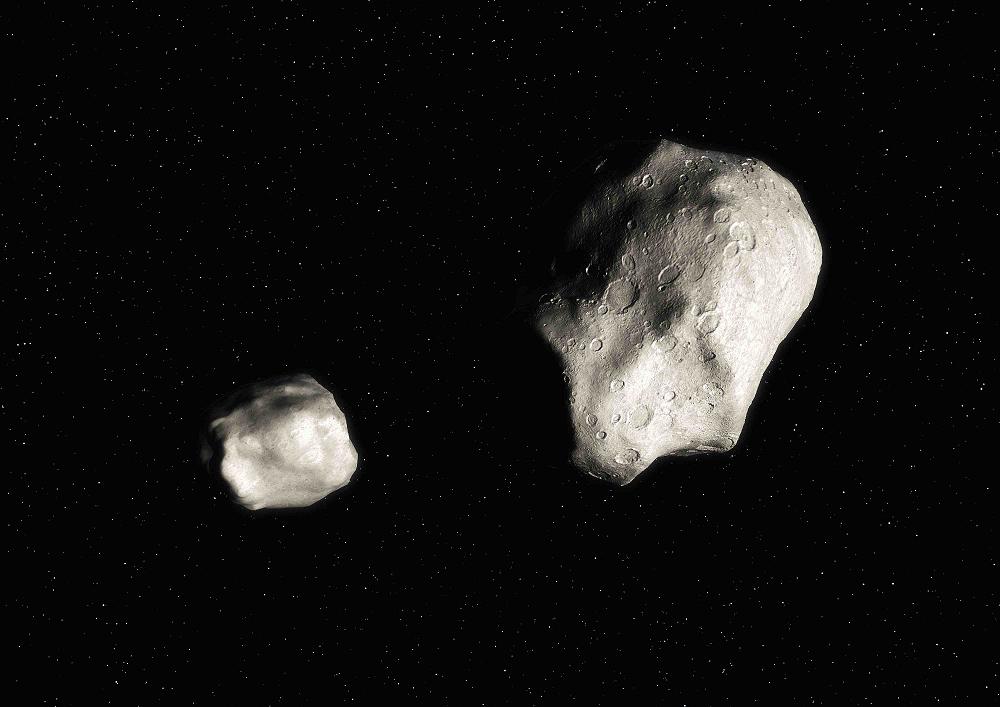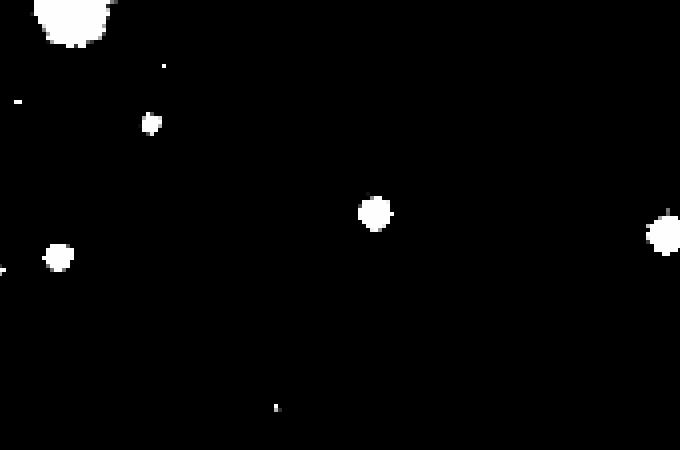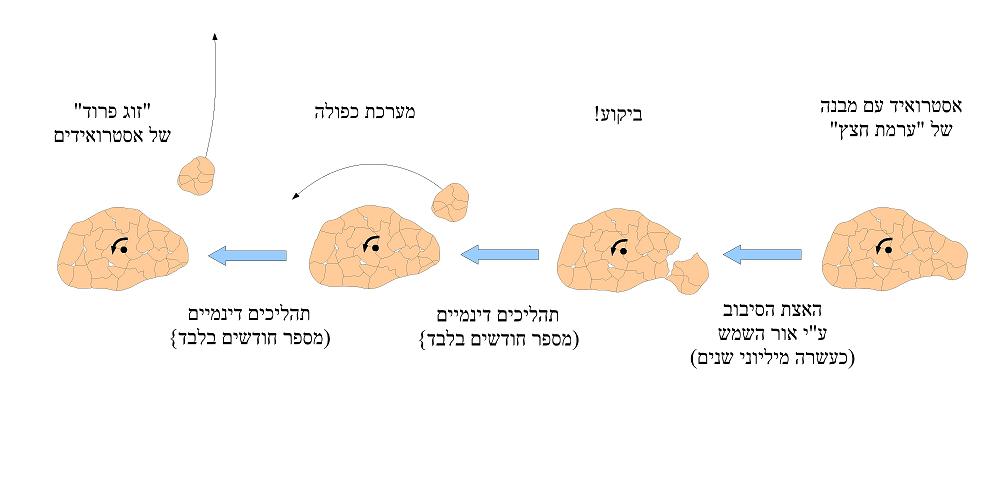A multi-year study conducted at Tel Aviv University's Wise Observatory, the results of which are published in the prestigious journal Nature on August 26, reveals how asteroids undergo a process of fission and separation due to rapid self-rotation

A multi-year study conducted at Tel Aviv University's Wise Observatory, the results of which are published in the prestigious journal Nature on August 26, reveals how asteroids undergo a process of fission and separation due to rapid self-rotation. The research, which was done as part of an international collaboration, proves that the asteroids, which were previously considered to be "floating blocks of rock" in space, are actually "gravel piles" of stones connected to each other by gravity alone. When these bodies adjust to a sufficiently high rotation speed, they split into two components and separate from each other to start a "new life" in orbit around the sun.
Tel Aviv University was chosen by the Israel Space Agency (ISA) and the Ministry of Science and Technology to establish a national knowledge center on near-Earth asteroids. The present study is part of the doctoral thesis of Mr. David Polishok, a research student in the Department of Geophysics and Planetary Sciences of Tel Aviv University and co-author of the article published in the journal Nature. Mr. Polishok won the prestigious three-year Ilan Ramon scholarship for outstanding doctoral students in the field of space, founded by the Ilan Ramon Foundation and the Ministry of Science and Technology.

The current study, conducted at the Florence and George S. Observatory. WISE, in partnership with 15 institutions and 11 observatories around the world, was coordinated and managed by Petr Pravec from the Astronomical Institute of the Czech Republic and also included researchers from the USA, Chile, Slovakia, Ukraine, Spain and France. The research involved tracking 35 "disparate pairs" of asteroids - two asteroids that are millions of km apart but share the same orbit around the Sun.

"Observing the changing brightness of the asteroids allowed us to study their rotation rate," explains Polischuk, "this is an essential feature when studying the origin and way of formation of these interesting bodies."
The research group showed that all pairs of separated asteroids maintain a special relationship between the large body and the small, where the small body will be at most 60% of the large body. These measurements exactly match the prediction of a theory developed in 2007 by Professor Dan Shears, from the University of Colorado and co-author of the article in Nature.
Shears' theory describes the formation of a double body by "rotational fission", when the asteroid breaks up into two bodies that separate from each other gently and at a relatively low speed. After the "rotational fission" the two components move in an orbit around each other. "Therefore," explains Shears, "the small component steals rotational energy from the large component and causes the large component to rotate more and more slowly, and the distance between them to increase. If the secondary component is small enough, there is enough energy available to separate the pair into two different asteroids orbiting the Sun in a similar orbit, but separately."
"Separated pairs" of asteroids were first discovered in 2008 by David Wokroholicki from Charles University in Prague and co-author of the article in Nature, but the process of their formation remained closed until the publication of the current article.
During the research, the astronomers used 15 telescopes around the world, where the most observations, over 320 hours of observation, were made by the two telescopes of Tel Aviv University's Weiss Observatory: a 1 meter diameter telescope, and a 0.46 meter telescope. "This study explains the connection between rapidly rotating asteroids and their disintegration into asteroid fragments, and shows that asteroids are not uniform bodies, fixed, and frozen in time," continues Shears, "instead it turns out that they are small worlds that evolve over time, and sometimes "give birth" to smaller asteroids who start their own lives in orbit around the sun.”
"Now, most of the pieces of the complex seem to be doing well," says Polischuk, "the sunlight is responsible for accelerating the rotation of the asteroids around their axis, as if they were winds responding to the wind; The brittle structure of the asteroids, the "gravel pile" structure, is what allows the centripetal force to overcome the weak gravitational forces and break the asteroid into its components; And the beauty is that this process takes place in a relatively short time, of a few million years, so there is enough time for this process to occur again and again and make the asteroids smaller and rounder."
This discovery joins the "hot" interest in asteroids this year. Last June, the Yabusa spacecraft returned to Earth after a seven-year journey in space and with it particles from the Itokawa asteroid on which it landed; NASA's Infrared Space Telescope (WISE) discovered tens of thousands of new and unknown asteroids; And in addition, the American president announced his vision in the field of solar system research which includes landing astronauts on a near-Earth asteroid. The study, published today in Nature, reveals something about the fragile structure of asteroids, and is essential in planning such a space mission.
"Asteroids are important in understanding life on Earth," says Shears. It is aimed at a crater in the Yucatan Peninsula, which, according to popular opinion, was created as a result of an asteroid impact about 65 million years ago and caused the extinction of the dinosaurs and other creatures, and the reorientation of the evolution of life on Earth. Also, it was found that certain asteroids contain amino acids - the building blocks of life - which make scientists speculate that life on Earth, or some of it, came from space on an asteroid.

4 תגובות
skeptic
The correctness of the article must be assumed from the fact that it was published in nature (although this is not an absolute guarantee).
Regarding the transformation of asteroids into gravel, not all asteroids become gravel and even asteroid pairs under the process described in the article. The process that causes the asteroid to break up is its increased rotation. The rotation is caused by uneven heating of the asteroid's surface by the sun. In order for the process to be effective, it is necessary for the asteroid to move close enough to the sun, therefore the described mechanism works mainly on asteroids close to the sun. There are other mechanisms such as a collision between asteroids that causes their disintegration, but this mechanism also has limited effectiveness.
For the skeptic, the theory of the asteroid killing the dinosaurs and another 90% of all life on Earth 65 million years ago was debated 20 years ago. Today it is accepted by consensus, since it has independent confirmations such as the finding of iridium which is a rare metal exactly in the layer of the period that separates the age of dinosaurs from the age of mammals, and the crater was also discovered in the sea near the Yucatan Peninsula in Mexico. It took me a while to adopt this approach, but after reading enough articles and books, I became convinced that those who oppose the claim have no explanation for these findings, and as soon as there is a scientific finding that one side has an explanation and the other side of the debate does not, the findings are the deciding factor.
my father
So what if his lecture, the same David Polishuk, "convinces" laymen.
The best asset of any con artist is his ability to "work" on the audience.
The maximum that can be concluded from the findings is that there is a tiny minority of asteroids that are not formed
as one piece. But what about all the other asteroids, how come they are also "gravel"?
And what about photographic images of large asteroids that appear to be amorphous lumps (obviously not spherical),
Although according to the "gravel theory" they were supposed to be approximately spherical (due to a self-gravitational force exerted on liquid "gravel piles", which would cause an aggregate change of the pile to an approximately spherical shape).
And in general, in this section we passionately defended the fact that an asteroid wiped out the dinosaurs
(pseudo science in its own right). How is it that a pile of gravel from 67 million years ago disintegrated in the atmosphere
Did the dust create a crater? How is it that the dust of the pebbles burned a quarter of a continent and raised a cloud with particles
Heavy metal (iridium or something like that)?
When I was a child I read arguments of the kind published here in children's magazines, amid wild curious speculations,
Maybe they are partly true and maybe not. Today these arguments have been upgraded to the rank of "science".
Apparently the researchers need budgets, that's why they blow our minds with scientific musings that are presented as science.
incidentally. Separation procedures of solar bodies that orbit each other are not at all a novelty.
They have been known for a long time. Examples: (1) The "gravitational jumpers" that are used to propel spaceships
To save fuel, (2) the hypothesis of the moon moving away from the earth. This is a distribution of momentum between two masses
Very different in their relative size that they float around each other, this physical theory is correct in itself but is not at all a novelty.
A lecture on the same topic by David Polisztsuk at the observatory in Givatayim was excellent and convincing
Well done
Good night
Sabdarmish Yehuda